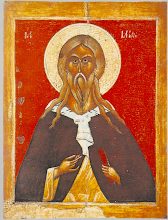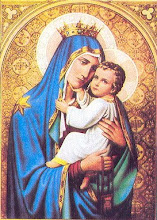 Little known among Catholics in America today are the sufferings of our Mexican brethren at the hands of the Communist, anti-clerical forces of the revolutionary government, amid a series of persecutions which were focused particularly on religious orders. Many communities of consecrated life in the United States owe their existence to Mexican priests and nuns who fled here in the first three decades of the twentieth century.
Little known among Catholics in America today are the sufferings of our Mexican brethren at the hands of the Communist, anti-clerical forces of the revolutionary government, amid a series of persecutions which were focused particularly on religious orders. Many communities of consecrated life in the United States owe their existence to Mexican priests and nuns who fled here in the first three decades of the twentieth century.One of the most fascinating and enigmatic of the refugee-foundresses is the Discalced Carmelite prioress, Mother Mary Elias of the Blessed Sacrament. Of Napoleon's line, Elena Maria Thierry was born on August 15, 1879 to a devout family of European extraction. The second to the youngest of twenty children, she received a thorough education, including operatic training, gifted as she was with a beautiful singing voice.
Called by God to the religious life, she first sought to enter a teaching order. On September 30, 1897, when traveling on a train to the convent, she suddenly found herself face to face with a young Carmelite nun. The nun looked at her knowingly and said, "You will remain there a short time. Then you will come to my order." The mysterious nun vanished.
Elena Maria was dismissed from the teaching order after a few years and sought to enter the Mexico City Carmel. On the walls of the Carmel hung a picture of the same nun Elena Maria had seen on the train. She was told it was the Little Flower who was already world famous because of her autobiography and the prodigies which had been worked through her intercession. The day Elena Maria had seen her on the train was the exact day Sister Therese of the Child Jesus had died far away in France.
Around 1904, Elena Maria Thierry entered the Carmel of Mexico City and was given the name of "Mary Elias of the Blessed Sacrament." Due to her fervor, charity and leadership abilities, she was transferred to the Carmel of Queretaro. Queretaro Carmel had been closed for many years because of the persecution and needed nuns like Mother Elias to help rebuild it. In 1910, the persecution broke out again. In 1913, Mother Elias, who by that time had been elected prioress, decided to move the community to the town of Aguascalientes where she thought they would be safer. However, there were few safe places for Mexican religious. The soldiers of the Revolution often broke into convents and kidnapped the young sisters. In 1914, Mother Elias decided she had better get all of her younger nuns out of Mexico.
(To be continued....)




















1 comment:
Oh, I'm looking forward to the next installment! The part about her meeting St. Therese on the train gives me goosebumps...what an incredible story.
Post a Comment